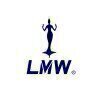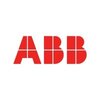Filter interviews by
Pitti Engineering Engineer Interview Questions and Answers
Pitti Engineering Engineer Interview Experiences
1 interview found
I applied via Walk-in and was interviewed in Mar 2021. There was 1 interview round.
Interview Questionnaire
1 Question
- Q1. Current working roles & responsibilities. Question on current role.
Interview Preparation Tips
Top trending discussions






Interview questions from similar companies

I applied via Company Website and was interviewed in Feb 2023. There were 2 interview rounds.

(6 Questions)
- Q1. 7 types of qc tools
- Ans.
7 QC tools are used for quality control in manufacturing. They are simple and effective tools to identify and solve problems.
Check sheets - used to collect data and analyze it
Pareto charts - used to identify the most frequent problems
Histograms - used to show the distribution of data
Cause-and-effect diagrams - used to identify the root cause of a problem
Flowcharts - used to show the steps in a process
Control charts - u...
- Q2. What is FMEA,what are the 5s,cp vs cps different
- Ans.
FMEA is a risk assessment tool used to identify and mitigate potential failures. 5S is a workplace organization method. CP and CPS are statistical process control measures.
FMEA stands for Failure Mode and Effects Analysis. It is a systematic approach to identifying and mitigating potential failures in a process or product.
5S is a workplace organization method that involves sorting, simplifying, sweeping, standardizing,...
- Q3. What is the ctq and ctc
- Ans.
CTQ stands for Critical to Quality and CTC stands for Critical to Customer.
CTQ is a measurable characteristic of a product or process that is important to the customer.
CTC is a measurable characteristic of a product or process that directly impacts customer satisfaction.
Identifying CTQs and CTCs helps in improving the quality of the product or process.
Examples of CTQs and CTCs include product reliability, on-time deliv...
- Q4. What are the different gauges
- Ans.
Gauges are instruments used to measure various physical quantities. There are different types of gauges for different purposes.
Pressure gauges measure pressure of fluids or gases
Temperature gauges measure temperature of substances
Thickness gauges measure thickness of materials
Wire gauges measure diameter of wires
Bore gauges measure diameter of holes
Thread gauges measure pitch and diameter of screws
Fuel gauges measure f
- Q5. What are the instrument handling
- Ans.
Instrument handling refers to the proper use, care, and maintenance of tools and equipment used in a particular field.
Properly clean and sterilize instruments before and after use
Handle instruments with care to prevent damage or contamination
Store instruments in a safe and organized manner
Regularly inspect instruments for wear and tear
Follow manufacturer's instructions for use and maintenance
Examples: surgical instrume
- Q6. Do you know the GD&T symbols
- Ans.
Yes, I am familiar with GD&T symbols.
GD&T stands for Geometric Dimensioning and Tolerancing
It is a system of symbols used to specify the dimensions and tolerances of a part
Examples of symbols include concentricity, perpendicularity, and flatness
Interview Preparation Tips
- Quality Control

- Q1. Which material marking cylinder
- Ans.
Material marking cylinders are tools used for marking or engraving materials in various engineering applications.
Used in manufacturing for marking parts with identification numbers.
Commonly made from durable materials like steel or aluminum.
Examples include engraving cylinders for metal parts or rubber stamps for softer materials.
Can be used in automated systems for high-speed marking.
- Q2. Which type of material making for bolier
- Ans.
Boilers are typically made from materials like steel, cast iron, and copper, chosen for their strength and heat resistance.
Steel: Commonly used for its high strength and ability to withstand high pressures.
Cast Iron: Known for excellent heat retention and durability, often used in residential boilers.
Copper: Used in some boiler designs for its excellent thermal conductivity, though less common due to cost.
Interview Preparation Tips

Junior Engineer Interview Questions & Answers
Thermax Limitedposted on 8 Aug 2024
I applied via Naukri.com and was interviewed in Feb 2024. There was 1 interview round.
(4 Questions)
- Q1. What is difference between RTD and thermocouple used
- Ans.
RTD measures temperature using resistance change, while thermocouple uses voltage change.
RTD stands for Resistance Temperature Detector, while thermocouple generates voltage based on temperature difference.
RTDs are more accurate and stable compared to thermocouples.
RTDs have higher initial cost but lower long-term maintenance cost.
Thermocouples are more rugged and can withstand higher temperatures than RTDs.
Example: RT...
- Q2. What is the PLC and DCS system
- Ans.
PLC and DCS systems are control systems used in industrial automation to monitor and control processes.
PLC stands for Programmable Logic Controller, used for controlling machinery and processes in manufacturing.
DCS stands for Distributed Control System, used for controlling complex processes across multiple locations.
PLCs are typically used for discrete control applications, while DCS systems are used for continuous co...
- Q3. What is the AC And DC drive
- Ans.
AC and DC drives are types of electrical drives used to control the speed and torque of electric motors.
AC drive controls the speed of an AC motor by varying the frequency of the electrical supply.
DC drive controls the speed of a DC motor by varying the voltage supplied to the motor.
AC drives are more commonly used in industrial applications due to their efficiency and flexibility.
DC drives are often used in applicatio...
- Q4. What do you understand by 4 wire and 2 wire
- Ans.
4 wire and 2 wire are configurations used in electrical circuits for measuring resistance.
4 wire configuration is used for accurate resistance measurements by eliminating lead resistance
2 wire configuration is simpler but less accurate due to lead resistance affecting measurements
Examples: 4 wire used in precision instruments like multimeters, 2 wire used in basic circuit testing
Skills evaluated in this interview

I applied via Company Website and was interviewed in Dec 2022. There were 2 interview rounds.

(2 Questions)
- Q1. Technically about company like safety..
- Q2. What is 5s and devine
- Ans.
5S is a methodology used to organize and maintain a clean and efficient workplace.
5S stands for Sort, Set in Order, Shine, Standardize, and Sustain.
It involves organizing and labeling tools and materials, cleaning and maintaining equipment, and creating a culture of continuous improvement.
Example: A factory implementing 5S might label all tools and materials, create a designated storage area for each item, and regularl...
Interview Preparation Tips

Interview Questionnaire
1 Question
- Q1. General deatail, previous job profile,

I applied via Recruitment Consultant and was interviewed in Aug 2020. There were 4 interview rounds.
Interview Questionnaire
3 Questions
- Q1. Besic knowledge of PLC
- Q2. Process of the power plan
- Ans.
The power plant process involves converting fuel into electricity through various stages.
Fuel is burned to produce heat
Heat is used to create steam
Steam turns a turbine
Turbine generates electricity
Electricity is sent to the grid for distribution
- Q3. PID
Interview Preparation Tips

I applied via Naukri.com and was interviewed in Mar 2021. There were 3 interview rounds.
Interview Questionnaire
1 Question
- Q1. More of my technical
Interview Preparation Tips

Senior Engineer Interview Questions & Answers
Isgec Heavy Engineeringposted on 20 Nov 2021
I applied via Naukri.com and was interviewed in May 2021. There was 1 interview round.
Interview Questionnaire
1 Question
- Q1. They just asked basics que. related to job profile.. seeking confidence..
Interview Preparation Tips

I applied via Approached by Company and was interviewed in Dec 2018. There were 5 interview rounds.
Interview Questionnaire
5 Questions
- Q1. Question related to your study and working area with deep knowledge .
- Q2. Iron carbon daigrame .
- Q3. Heat treatment , composition , matallurgy etc.
- Q4. Job related and working process related .
- Q5. Man power realted Capacity related Welding related & situational question.
Interview Preparation Tips
Experience: First devision is mandatory in all pattern .
General Tips: Salary discussion .
Skills: Communication, Problem Solving, Leadership, Presentation Skills, Decision Making Skills
Duration: <1 week
Pitti Engineering Interview FAQs
Tell us how to improve this page.
Pitti Engineering Interviews By Designations
- Pitti Engineering Junior Engineer Interview Questions
- Pitti Engineering Engineer Interview Questions
- Pitti Engineering Production Planning Manager Interview Questions
- Pitti Engineering Senior Engineer Interview Questions
- Pitti Engineering Senior Operator Interview Questions
- Pitti Engineering Purchase Executive Interview Questions
- Pitti Engineering General Manager Operations Interview Questions
- Pitti Engineering Junior Engineer Electrical Interview Questions
- Show more
Interview Questions for Popular Designations
- Junior Field Engineer Interview Questions
- Process Engineer Interview Questions
- Design Engineer Interview Questions
- Technical Lead Interview Questions
- Post Graduate Engineer Trainee [pget] Interview Questions
- Senior Engineer Interview Questions
- System Engineer Interview Questions
- Junior Analyst Interview Questions
- Show more
Engineer Interview Questions from Similar Companies
Pitti Engineering Engineer Reviews and Ratings
based on 13 reviews
Rating in categories
|
Junior Engineer
141
salaries
| ₹1.9 L/yr - ₹4.7 L/yr |
|
Junior Supervisor
134
salaries
| ₹1.5 L/yr - ₹5 L/yr |
|
Engineer
62
salaries
| ₹2.3 L/yr - ₹5.2 L/yr |
|
Quality Engineer
43
salaries
| ₹2.1 L/yr - ₹4.7 L/yr |
|
Supervisor
43
salaries
| ₹2.3 L/yr - ₹5.8 L/yr |

Thermax Limited

ABB

Isgec Heavy Engineering

Kirloskar Oil Engines
- Home >
- Interviews >
- Pitti Engineering Interview Questions >
- Pitti Engineering Engineer Interview Questions












